John William Waterhouse: A Collection of 20 Timeless Paintings
John William Waterhouse, an English painter and draftsman, is renowned as one of the most celebrated Pre-Raphaelite artists.
Born in Italy in 1849 to a family of painters, Waterhouse’s passion for natural settings and his inspiration from strong, stunning female figures made his work highly sought-after among patrons.
His iconic artworks, such as “The Lady of Shalott” and “Hylas and the Nymphs,” showcase his mastery of capturing beauty and emotion.
Join us as we delve into the life and artistry of this remarkable artist and learn more about some of his famous artworks.
John William Waterhouse’s passion for art in early years

Waterhouse, son of English painters William and Isabella Waterhouse, grew up in an artistic household. Known as Nino to his family and friends, he led a simple and quiet social life without much drama.
His early years in Italy influenced many of his later paintings, which often depicted scenes from ancient Rome or Roman mythology.
In 1854, the Waterhouse family moved to South Kensington, London. Encouraged to draw from a young age, Waterhouse frequently sketched artworks at the British Museum and the National Gallery.
By 1871, he had enrolled in the Royal Academy of Art school, initially focusing on sculpture before transitioning to painting.
His evolution as an artist
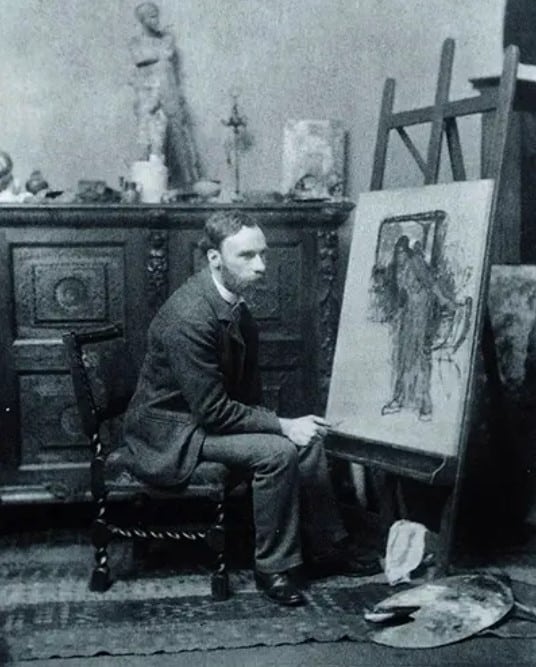
Throughout his life, Waterhouse produced more than 200 paintings, but his big break came in 1886 when Sir Henry Tate purchased Consulting the Oracle.
At first, Waterhouse’s art was not in the Pre-Raphaelite style. Instead, he focused on classical themes, influenced by artists like Alma-Tadema and Frederic Leighton. His early works were displayed at the Dudley Gallery and the Society of British Artists.
One of his notable works, Sleep and His Half Brother Death, earned significant praise at the Royal Academy summer exhibition. From that point on, Waterhouse’s artworks were consistently displayed in annual exhibitions.
In his later years, he adopted the Pre-Raphaelite approach, creating large watercolors that featured beautiful, tragic, and powerful women.
John Waterhouse drew inspiration from two prominent artists of his time, Frederic Lord Leighton and Sir Lawrence Alma-Tadema.
Waterhouse developed a distinctive style, painting classical and mythical scenes. A true romantic, he was passionate about capturing natural beauty and strong, beautiful female figures. He created remarkable portraits of some of the famous women of his era.
Most of his paintings were in oil. Waterhouse used vivid color schemes, natural settings, and beautiful light. His paintings often illustrated tales of love and tragedy, brought to life by his female muses.
Discover some of his most famous paintings
1. Sleep and his Half-brother Death, 1874
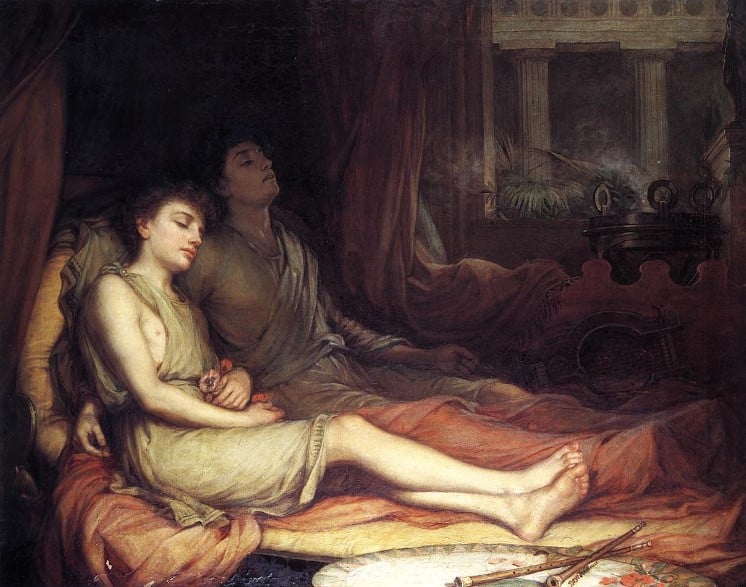
In Greek mythology, the painting symbolizes the brothers Hypnos (representing sleep) and Thanatos (representing death).
Despite their similar positions, the figure in the foreground is bathed in light, symbolizing Sleep, while his brother is enveloped in darkness, symbolizing Death. The personification of Sleep holds poppies, which symbolize narcosis and dreamlike states.
2. The Magic Circle, 1886
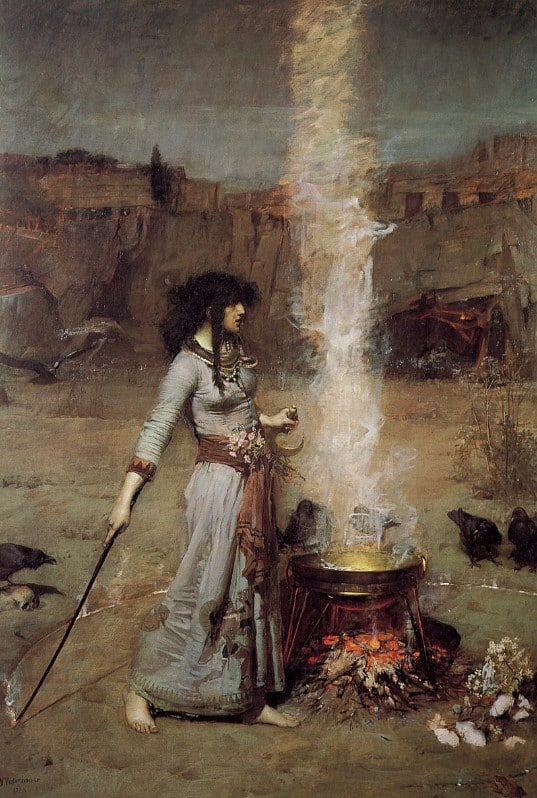
The woman depicted in this painting appears to be a witch or priestess, endowed with magic powers, possibly the power of prophecy.
Her attire and appearance draw from various sources: her complexion suggests Middle Eastern heritage, her hairstyle resembles that of early Anglo-Saxons, and her dress features decorations reminiscent of Persian or Greek warriors.
Holding a crescent-shaped sickle in her left hand connects her with the moon and the goddess Hecate, while the wand in her right hand is used to draw a protective magic circle around her.
Outside the circle, the landscape is barren, with symbols of evil like rooks, ravens, and a frog, all associated with witchcraft, excluded.
Though the picture’s meaning remains unclear, its mystery and exoticism resonated with contemporary viewers.
3. Mariamne Leaving the Judgement Seat of Herod, 1887
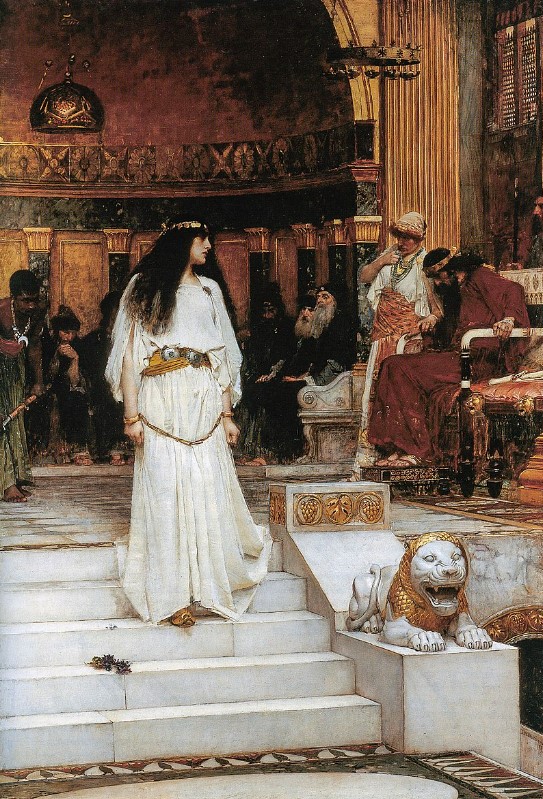
This painting by Waterhouse depicts a dramatic scene involving Mariamne, who was favored among King Herod’s wives. Despite his supposed love for her, false rumors of infidelity led Herod to put Mariamne on trial and ultimately sentence her to death.
In the artwork, Mariamne is shown with bound arms and clenched fists, facing her husband as he averts his gaze in despair. Behind her, powerful elders sit in judgment. Mariamne’s white dress symbolizes her innocence, while the descending staircase signifies her tragic fate.
4. The Lady of Shalott, 1888

The Lady of Shalott, one of Waterhouse’s most famous works, completed in 1888, is painted in the Pre-Raphaelite Brotherhood style.
This piece portrays the central figure from Tennyson’s poem, “The Lady of Shalott” (1842). In the poem, the Lady of Shalott is confined to a tower on an island near Camelot, cursed to view the world only through a mirror’s reflection.
Waterhouse’s painting captures the pivotal moment from the third part of the poem. The Lady of Shalott sees Sir Launcelot, hears him singing, and is compelled to leave the tower, breaking her curse. She then sets out on a boat towards Camelot.
5. Circe Offering the Cup to Ulysses, 1891
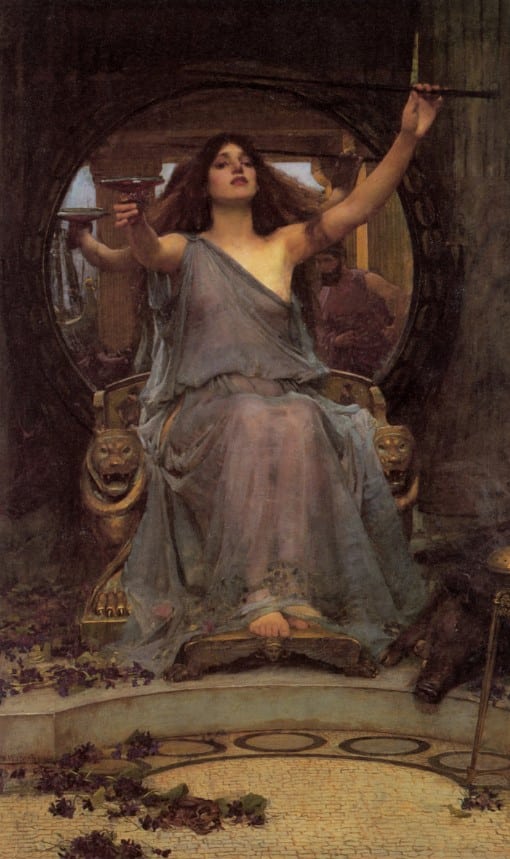
This oil painting, created in 1891 by John William Waterhouse in the Pre-Raphaelite style, draws inspiration from Homer’s Odyssey.
Waterhouse was captivated by the tale of Circe, a beautiful sorceress who used her magic to transform humans into animals by offering them a special wine to drink.
In the story, Circe ensnares Ulysses’ men, turning them into pigs while Ulysses is away. However, Ulysses, aware of her powers, seeks protection from Hermes to resist Circe’s enchantments.
When Ulysses confronts Circe, she attempts to transform him as well, but he remains unaffected. Fearing his retaliation, Circe begs for mercy as Ulysses draws his sword.
6. Circe Invidiosa, 1892
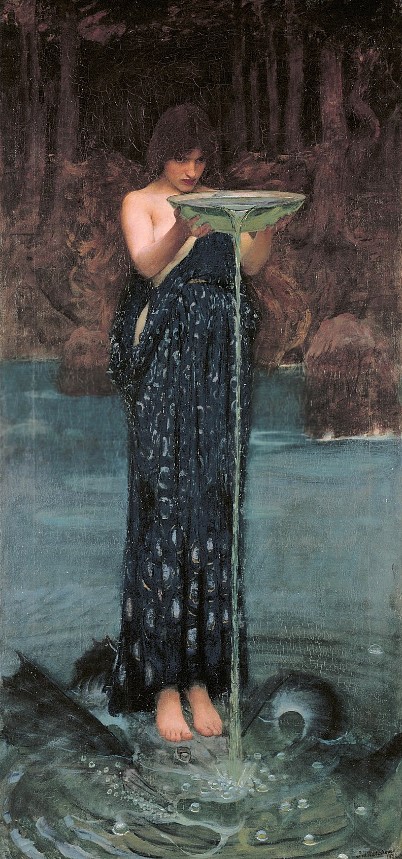
Painted in 1892, this artwork by William Waterhouse depicts a tall woman pouring a green liquid from a bowl into the water below, with her head slightly inclined. A mysterious figure seems to swim at her feet, submerged in the blue-green depths.
Inspired by Ovid’s tale in Metamorphoses, the painting portrays a mythological scene where Circe transforms Scylla into a sea monster. This metamorphosis occurs as a result of Glaucus rejecting Circe’s advances in favor of pursuing Scylla’s affections.
7. The Lady of Shalott Looking at Lancelot, 1894
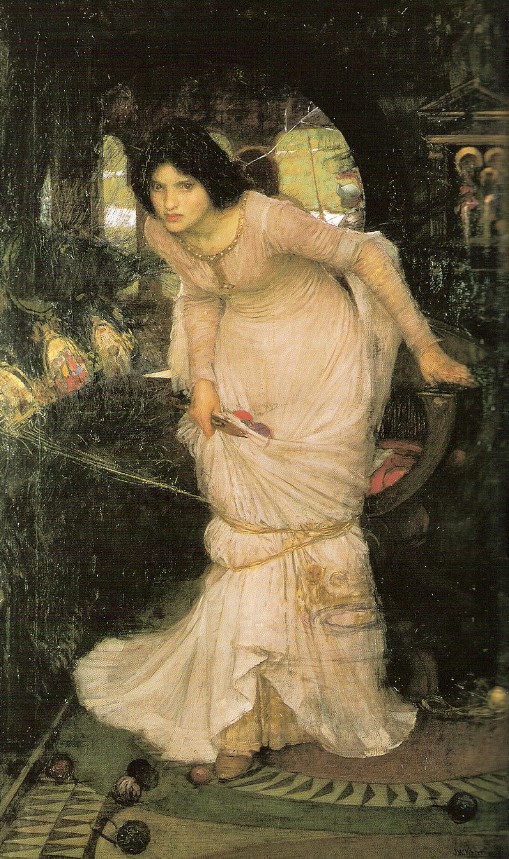
Waterhouse completed this oil-on-canvas painting in 1894, marking the second of three major artworks where he depicted scenes from Tennyson’s poem.
In Tennyson’s poem, the Lady is confined to a tower on an island near Camelot, under a curse that forbids her from leaving or looking out of the tower’s windows.
She spends her days weaving a tapestry, her only connection to the outside world being the reflections she sees in a mirror behind her.
8. Ophelia, 1894
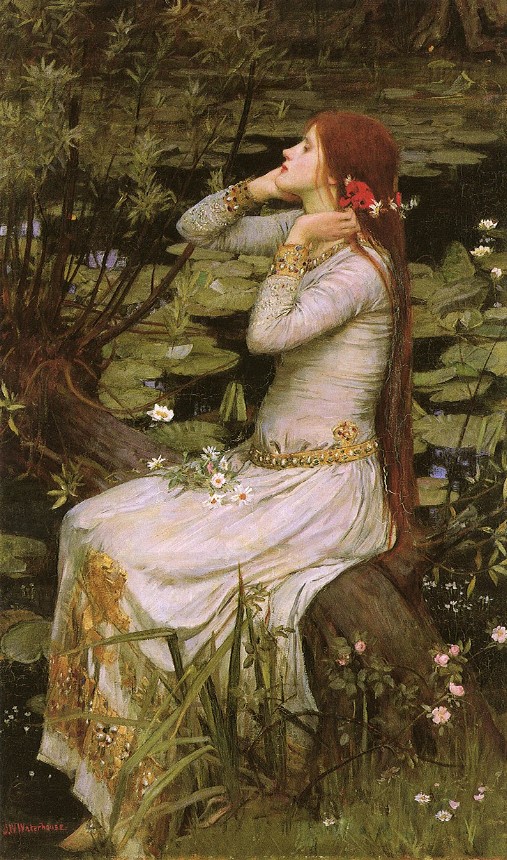
One of Waterhouse’s favorite subjects was Ophelia;a character from Shakespeare’s “Hamlet.”
One of his most renowned paintings portrays Ophelia in the moments before her tragic demise, adorning her hair with flowers as she sits on a tree branch above a serene lake.
This theme, reminiscent of his other works like “The Lady of Shalott,” often explores the theme of women facing death in or near bodies of water.
9. Hylas and the Nymphs, 1896
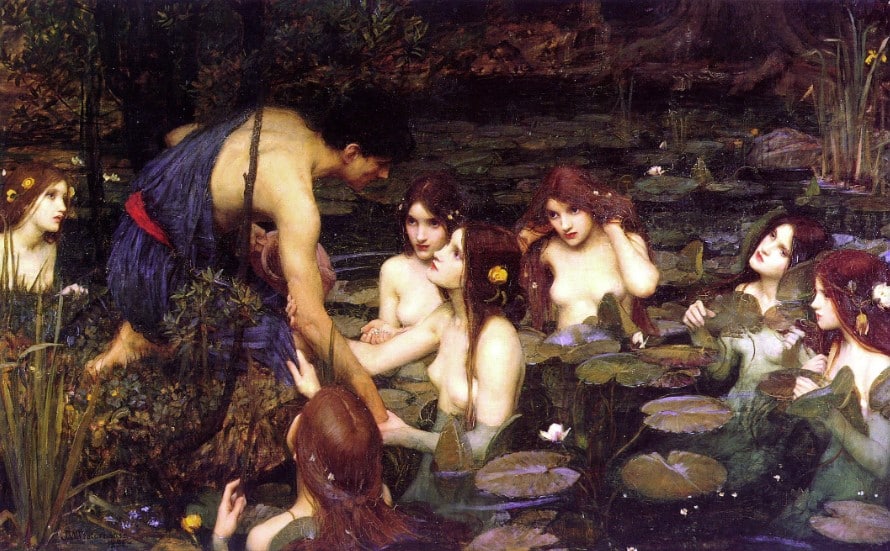
Completed in 1896, Waterhouse’s painting depicts a scene from the Greek/Roman legend of Hylas. In this story, the young Hylas is taken by naiads, female water nymphs, while searching for drinking water.
In the painting, Hylas wears a blue tunic and holds a wide-necked water container. The naiads, with radiant skin and yellow and white flowers in their reddish-brown hair, are depicted naked and with similar body types. One naiad grips Hylas’s wrist and elbow, another pulls at his tunic, and a third offers pearls in her hand.
The scene is shown from a first-person perspective, looking down at the water, mirroring Hylas’s view. Hylas’s position in the painting allows the viewer to experience his first encounter with the naiads.
10. The Siren, 1900
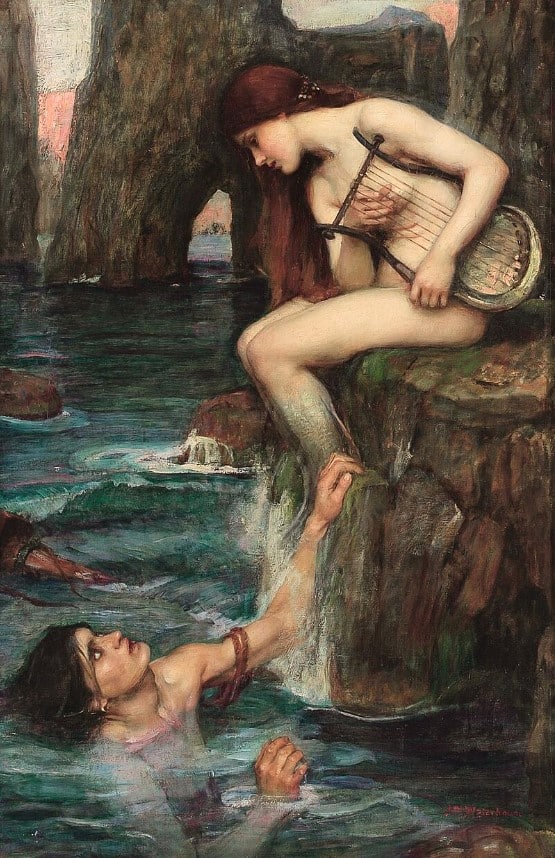
In this painting, a siren is portrayed sitting at the cliff’s edge, holding a lyre, gazing down at a sailor who is floating in the water after a shipwreck. The sailor, in turn, looks up at her. Created in 1900, this artwork is currently held in a private collection.
11. The Mermaid, 1901

This artwork portrays a solitary mermaid seated by the shore, gently brushing her long, reddish hair. Beside her rests a large shell adorned with pearls, while she appears to be lost in song.
Traditionally, mermaids lured sailors to their demise with their enchanting melodies, using their voices to tempt them into dangerous waters.
12. Echo and Narcissus, 1903
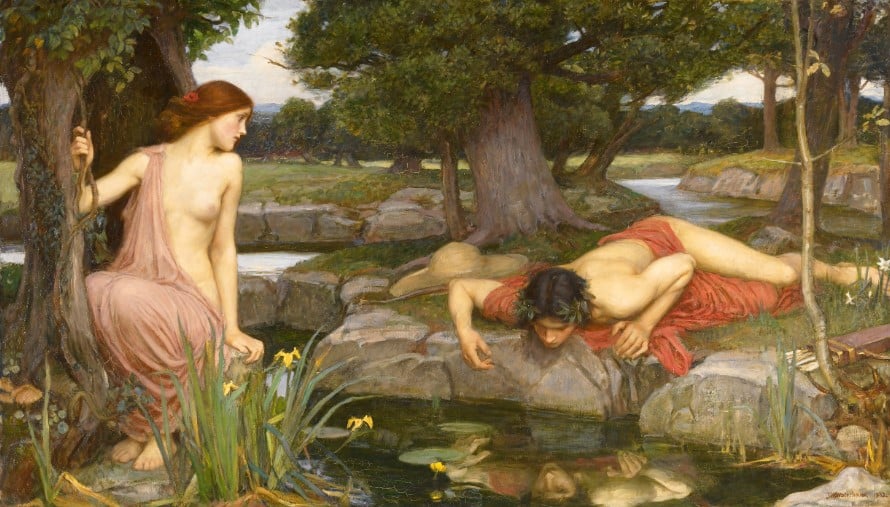
“Echo and Narcissus” is a 1903 oil painting by John William Waterhouse, depicting the myth from Ovid’s Metamorphoses. The scene is set in a serene wooded landscape beside a stream with rocky banks.
Narcissus, lying by the water, is captivated by his own reflection. He wears a red robe, symbolizing his intense self-love. Across the stream sits Echo, holding onto a tree, gazing at Narcissus with sorrow.
Despite her longing, Narcissus remains oblivious to her presence. Echo’s posture reflects her unrequited affection, her pink robe representing a less passionate love compared to Narcissus’ fervor.
13. Boreas, 1903
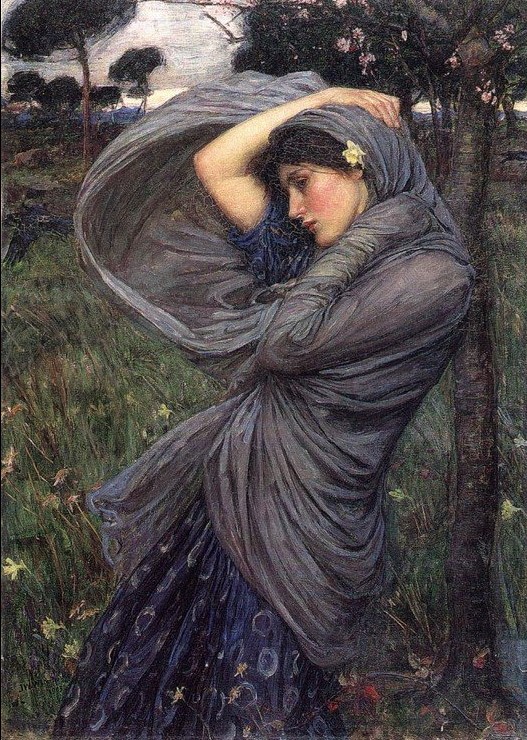
This captivating portrait from 1903 depicts a young woman standing in the wind, her scarf blowing away as she grasps it tightly. The scene is set in springtime, with pink blooms and yellow daffodils adorning the background.
For over 90 years, this painting was lost, only to resurface around 1990, making it available for purchase once more. Named after Boreas, the Greek god of the northern wind, this artwork continues to enchant viewers with its beauty and history.
14. The Soul of the Rose, 1908
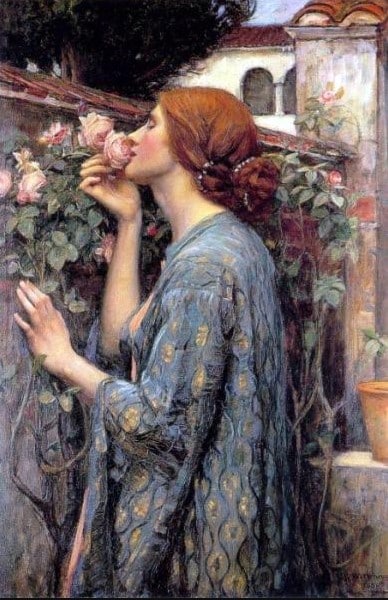
Unlike many of Waterhouse’s other works, “The Soul of the Rose” doesn’t depict a scene from a well-known or ancient love story. Instead, it’s a study of a woman in a garden, thought to be inspired by Alfred Lord Tennyson’s poetry.
The woman leans forward to smell a rose, her half-closed eyes suggesting she hopes the flower’s scent will reveal a hidden secret.
While she might still symbolize the object of someone else’s desire, the painting invites us to delve into her psyche and imagine a hidden narrative of unfulfilled or hopeful love.
15. Lamia, 1905
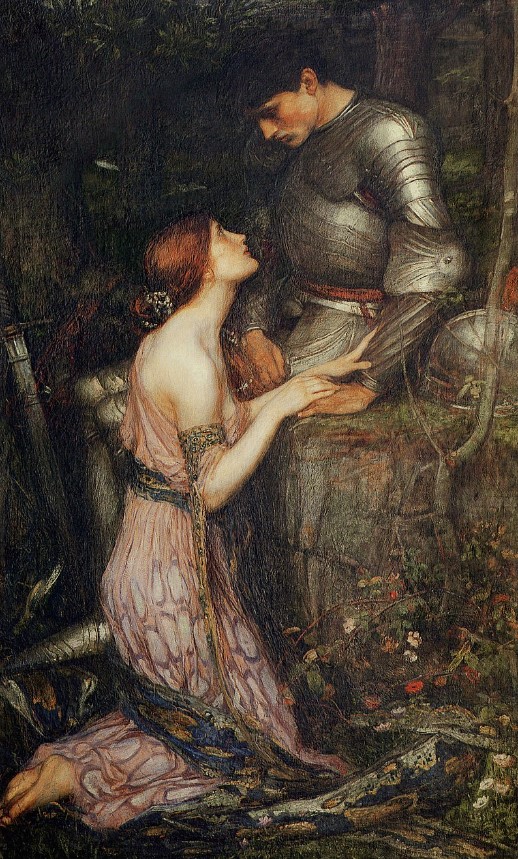
Waterhouse found inspiration in the tale of Lamia for his painting. In the artwork, Lamia appears as a stunning woman, captivating a soldier named Lycius. Yet, upon closer inspection, subtle details reveal her true nature – a snake skin on her arm and a serpent’s tail, symbolizing the hidden monstrosity beneath her beauty.
16. Jason and Medea, 1907
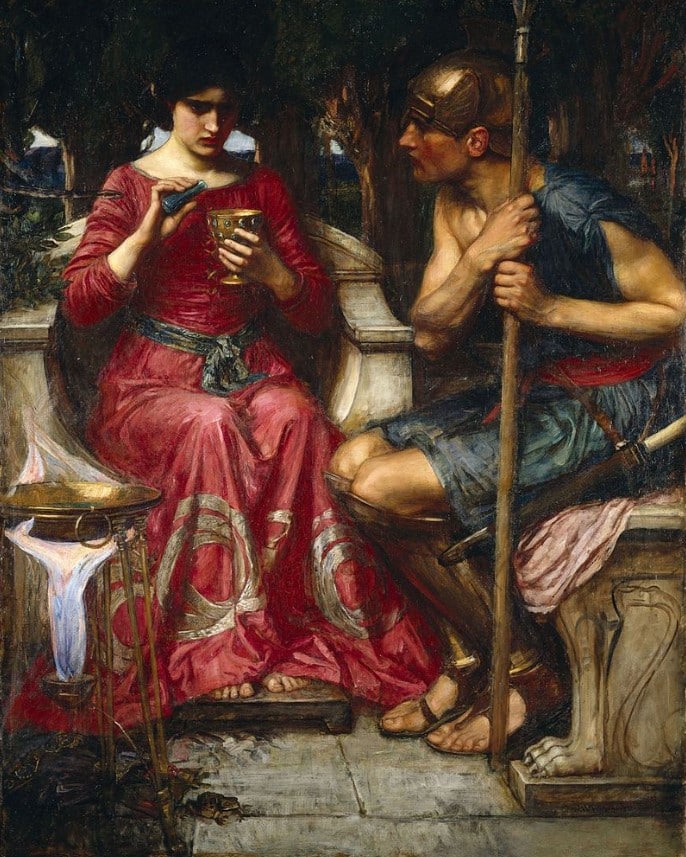
“Jason and Medea” (1907) is a captivating oil painting in the Pre-Raphaelite style.
In this artwork, Medea, the princess of Colchis, is depicted brewing a magical potion for Jason, aiding him in completing the challenging tasks set by her father, Aeëtes.
With a determined expression on her face, Medea’s portrayal in the painting aligns with the characterizations found in Greek literature, notably Euripides’ tragic play, “Medea.”
17. Isabella and the Pot of Basil, 1907
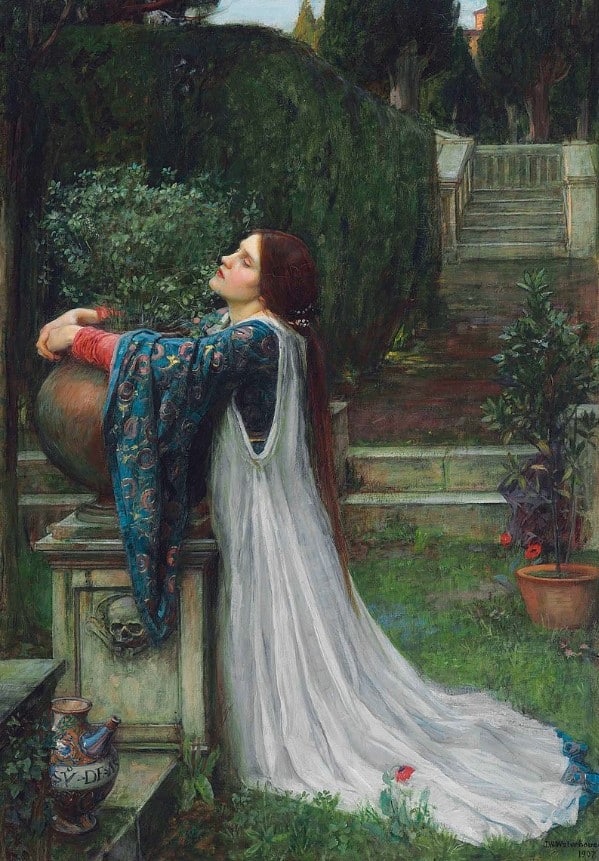
“Isabella and the Pot of Basil” (1907) by John William Waterhouse portrays Isabella kneeling beside a pot of basil in a lush Renaissance-style garden. The painting is inspired by a Romantic tale from The Decameron.
In the story, Isabella, a maiden from Florence, falls in love with Lorenzo, who works for her merchant brothers. Learning of their love, the brothers murder Lorenzo and bury him in the forest.
Lorenzo appears to Isabella in a vision, revealing the location of his body. Isabella retrieves his head and hides it in a pot of basil, which flourishes from her tears.
When her brothers discover the truth and steal the pot, Isabella, deprived of her love, succumbs to grief and dies.
18. Lamia, 1909
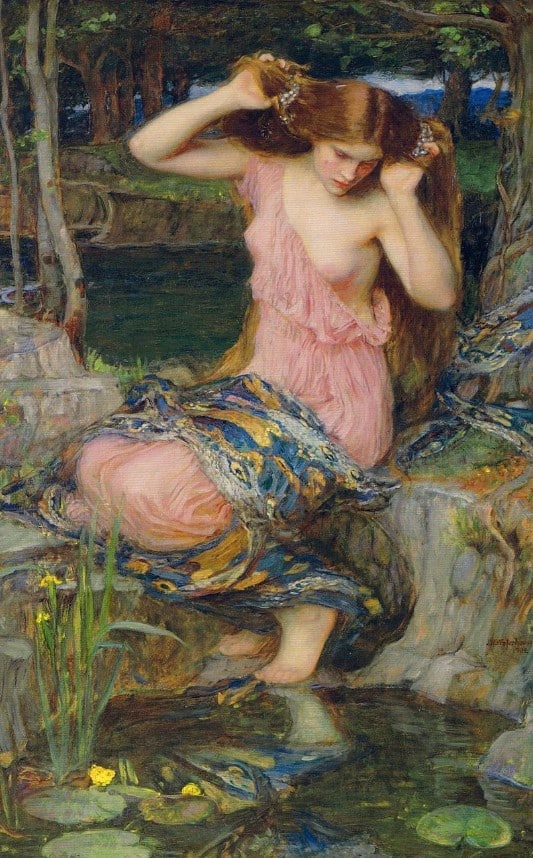
In the painting “Lamia” from 1909, Lamia gazes at her own reflection in a pool of water. Her appearance seems serene and captivating, with only the deep blue fabric enveloping her hinting at her true nature. This cloth is often interpreted as a representation of snake skin, adding layers of symbolism to the artwork.
19. I Am Half-Sick of Shadows, Said the Lady of Shalott, 1915
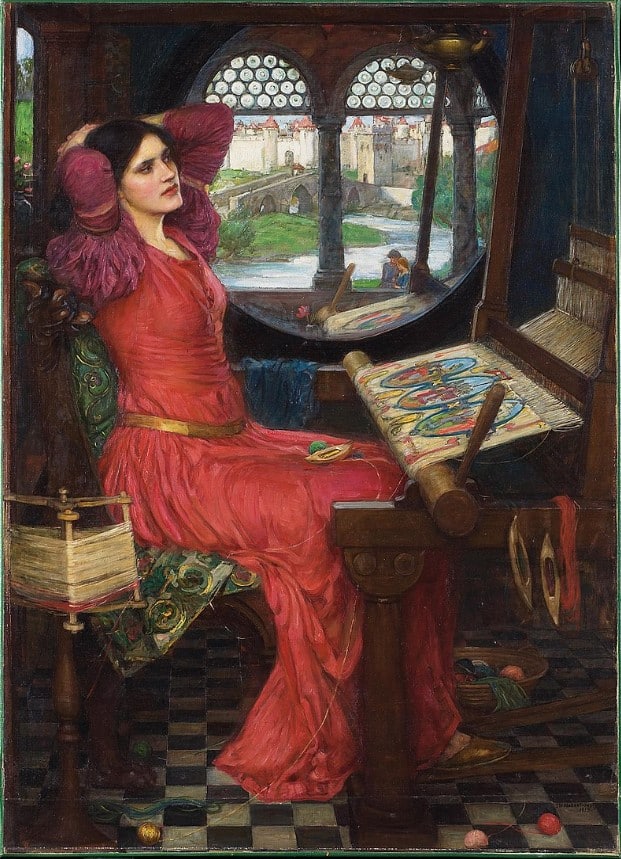
This marks Waterhouse’s third painting inspired by Tennyson’s poem, “The Lady of Shalott.”
In the painting, we see the Lady of Shalott taking a break from her weaving. She is dressed in red, surrounded by Romanesque columns that support the arches of the window, reflecting in the mirror.
The loom’s frame and the geometric tiles on the floor draw the viewer’s eye into the room, where vibrant reds, yellows, and blues mirror the colors outside. A lone poppy is reflected in the mirror, and the loom’s shuttles resemble boats, hinting at the Lady’s tragic fate.
20. Miranda – The Tempest, 1916

Miranda is a fictional character from William Shakespeare’s play, The Tempest. In 1916, Waterhouse painted one of his most famous works depicting Miranda as described in a pivotal scene.
In the painting, she gazes out to sea, watching a ship break apart in massive waves. Though we can’t see Miranda’s face, we can feel her sorrow.
The storm in the background adds to the painting’s dramatic effect, creating a sense of fear and chaos. Waterhouse used cold tones to highlight the themes of loss and numbness.

